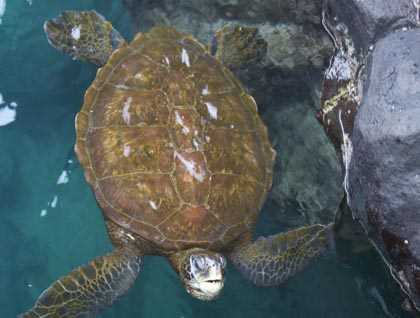After almost a week here in Galápagos, we are still enjoying and discovering the wonders of this oceanic archipelago. And this morning in a pre-breakfast activity we disembarked on a black sandy beach which was covered with button mangroves all along the beach. Then we took a mile and a half walk along the trail to explore a dense vegetation zone.
This area has also lots of terrestrial birds and being here very early in the morning was magical. On our hike there were a few minutes of silence as we tried to identify how many species of birds were out there, just by listening to the sounds they make. It was very impressive because at the end of this morning activity we spotted Galapagos hawks, Galapagos doves, Galapagos mocking birds, Galapagos fly-catchers, and a few species of finches and a beautiful landscape as well. While we were heading back onboard, a feeding frenzy took place along the beach with blue footed boobies, pelicans, brown noddy terns and storm petrels.
We continued with our morning expedition in a different location on the same island, this place is known as Buccaneer’s Cove because it was a hiding and a resting spot for these people two centuries ago.
The water was refreshing, just the perfect temperature for snorkeling with lots of fish, Galapagos sea lions and Galapagos fur seals and two gigantic marbled sting rays.
This point has a very impressive and dramatic formation as well, with standing rocks as a result of the erosion over the years. This place also has a cave which we explored with the help of our expert Zodiac drivers.
We even had time for a short Zodiac ride with cameras in hand to photograph this impressive geological formation.
Our final activity took place at another well known visitor site, Egas Port. This name was given in honor of Hector Egas who came to start a salt mining operation, unfortunately with little success.
The hike took place along the coastal area over a mixed terrain with volcanic ash compacted as cement, lava flows, and sunken lava tubes.
This is one of the best places to identify migratory shore birds such as: whimbrels, ruddy turn stones, plovers, sanderling and sand pipers as well.
Our main mission, however, was to see our two endemic marine mammals living next to each other and at the same time. But in order to see them we had to walk almost to the end of our trail to a point known as the Groton’s; this place has some crevices, rockery areas, lava tubes and many shady spots which is the perfect habitat for our Galapagos fur seals.
It was a perfect ending with the company of our two Galapagos sea lions and a beautiful sunset.







